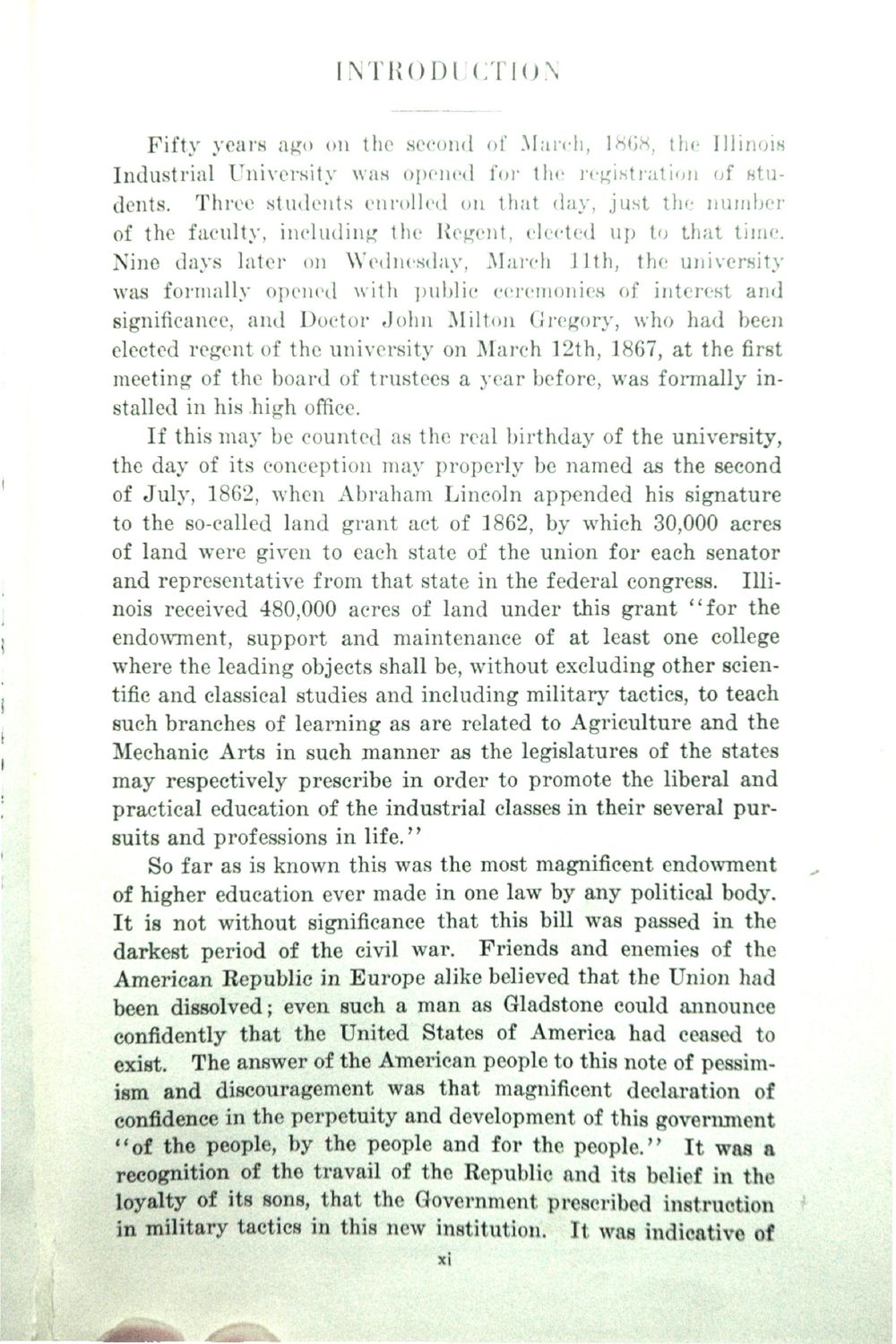| |
| |
Caption: Book - History of the University (Powell)
This is a reduced-resolution page image for fast online browsing.

EXTRACTED TEXT FROM PAGE:
INTRODUCTION Fifty years ago on the second of March, 1868, the Illinois Industrial University was opened for the registration of students. Three students enrolled on that day, just the number of the faculty, including the Regent, elected up to that time* Nine days later on Wednesday, March 11th, the university was formally opened with public ceremonies of interest and significance, and Doctor John Milton Gregory, who had been elected regent of the university on March 12th, 1867, at the first meeting of the board of trustees a year before, was formally installed in his high office. If this may be counted as the real birthday of the university, the day of its conception may properly be named as the second of July, 1862, when Abraham Lincoln appended his signature to the so-called land grant act of 1862, by which 30,000 acres of land were given to each state of the union for each senator and representative from that state in the federal congress. Illinois received 480,000 acres of land under this grant "for the endowment, support and maintenance of at least one college where the leading objects shall be, without excluding other scientific and classical studies and including military tactics, to teach such branches of learning as are related to Agriculture and the Mechanic Arts in such manner as the legislatures of the states may respectively prescribe in order to promote the liberal and practical education of the industrial classes in their several pursuits and professions in life,'' So far as is known this was the most magnificent endowment of higher education ever made in one law by any political body. It is not without significance that this bill was passed in the darkest period of the civil war. Friends and enemies of the American Republic in Europe alike believed that the Union had been dissolved; even such a man as Gladstone could announce confidently that the United States of America had ceased to exist. The answer of the American people to this note of pessimism and discouragement was that magnificent declaration of confidence in the perpetuity and development of this government "of the people, by the people and for the people." It was a recognition of the travail of the Republic and its belief in the loyalty of its sons, that the Government prescribed instruction in military tactics in this new institution. It was indicative of xi i>
| |